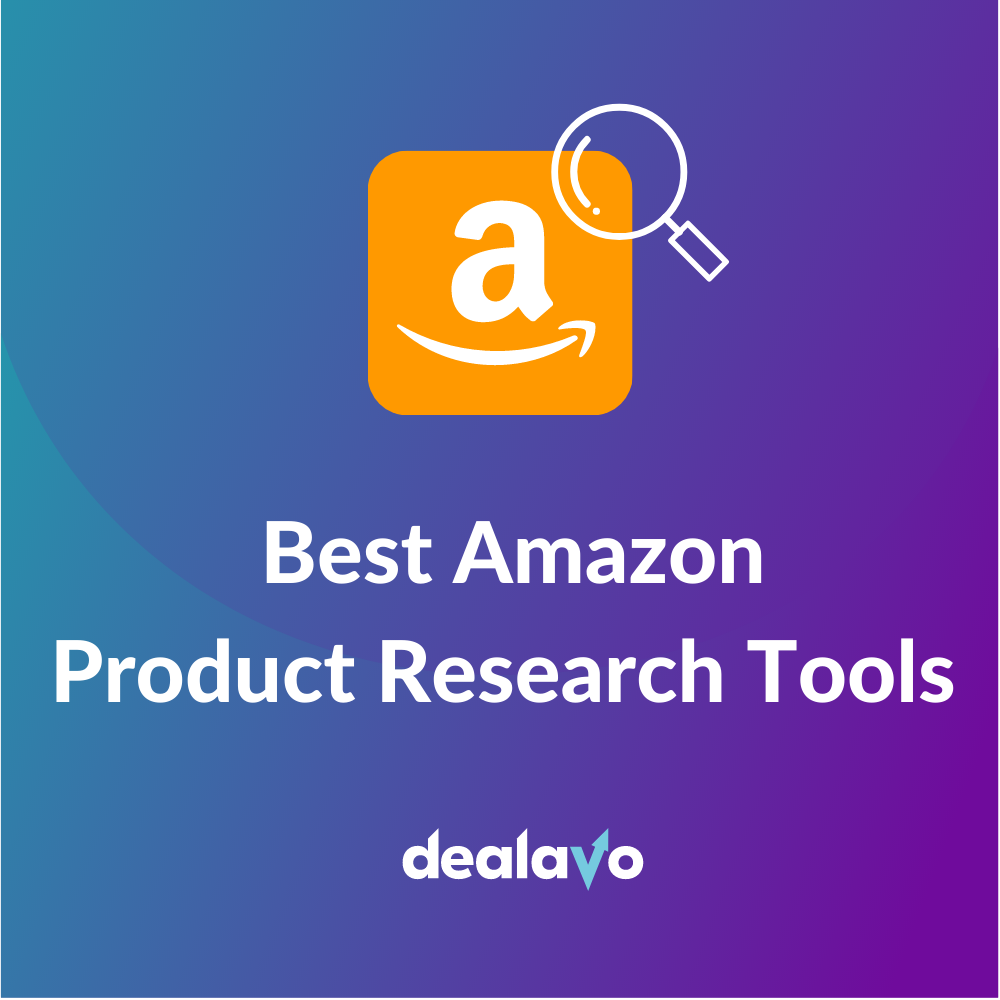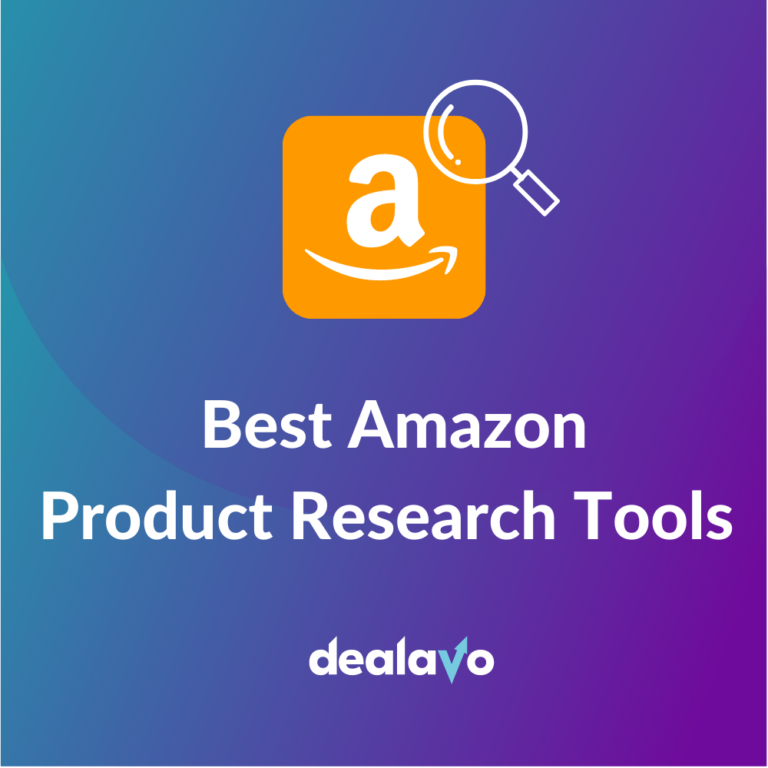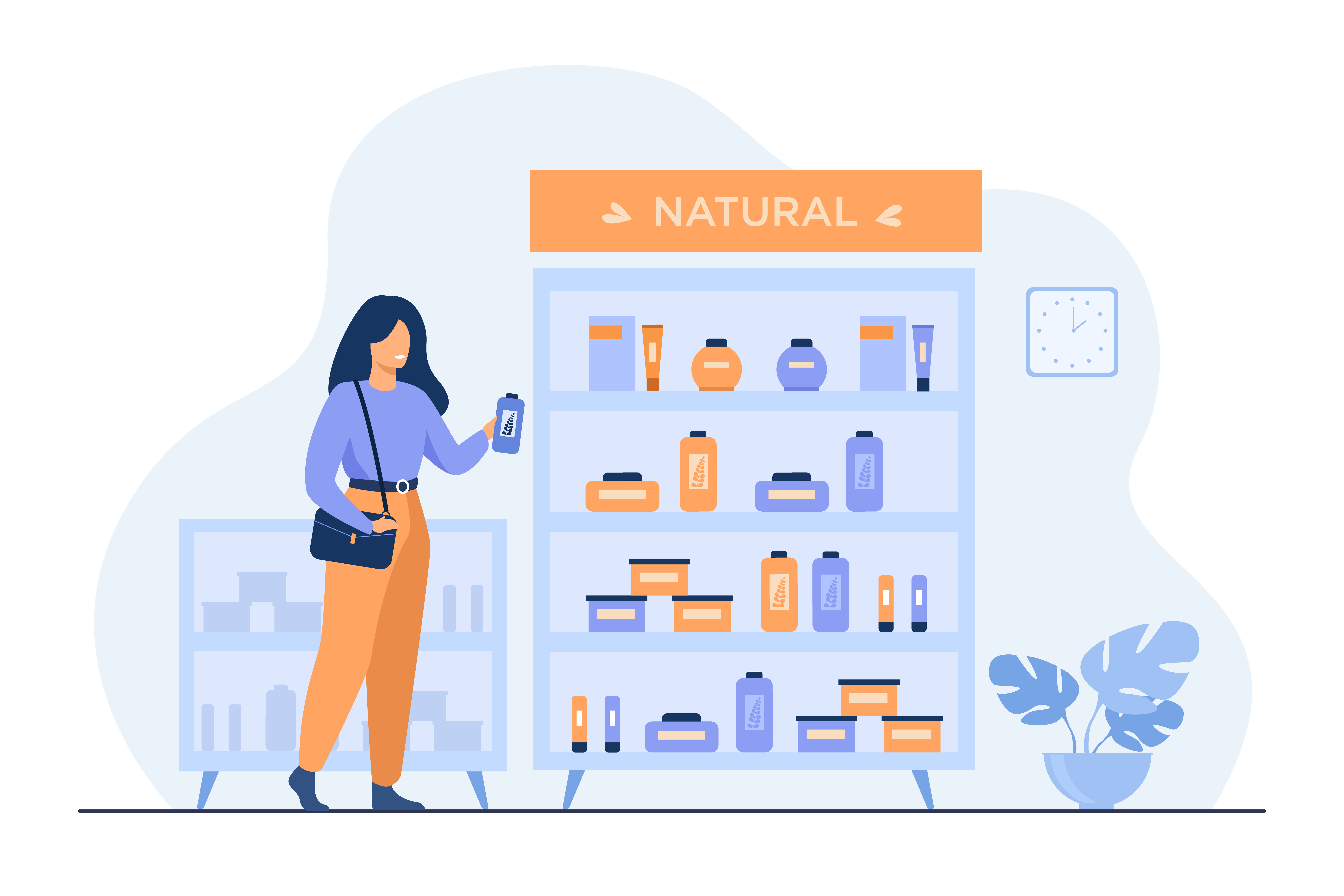Competitive Intelligence Tools in a nutshell – all you need to know about Competitive Intelligence but were afraid to ask
- 15 December 2022
Competition is a core of every industry – you like it or not. As there are more and more emerging opportunities, for example – in the e-commerce field – the competition is becoming fierce. Therefore, business owners are looking for solutions they may use to outperform their competitors. That’s where competitive intelligence comes in handy.
In this article, we’d like to guide you through competitive intelligence secrets, explaining its definition, showing examples as well as presenting you with the top 7 competitive intelligence tools for your business. Check out all you need to know about Competitive Intelligence but you were afraid to ask.
What is Competitor Intelligence – definition
Being an e-commerce retailer or just operating in a competitive landscape you’ve probably thought about doing some research about your industry, competitors, and items available on the market. This data gathering and analysis is what we called competitor intelligence known also as competitive intelligence.
The main goal of data acquisition is to verify market conditions and identify its shortcomings as well as evaluate the chances. The main component of competitive intelligence is competitive intelligence research. Though it may seem to be a bit challenging it’s a feasible way of data gathering even for those on a budget. You can conduct it in-house with a little help from your team or search for information online.
To check what your competitive landscape looks like you can use:
- competitors’ websites to find out more about their target audience and offer,
- social media postings and newsletter,
- social network groups,
- any public information about your industry & competitors released online and offline.
However, we encounter two key problems here.
- You need to double-check whether the information you get is truly public and open. Gathering any confidential data is illegal and may put you at risk of financial loose.
- Though competitive intelligence research is feasible to be done manually, its effectiveness can be doubtful. First of all, you need to think about the enormous quantity of information available today. Also, the dynamic of almost every industry has changed drastically, so offers, promotions, prices, or even websites can change on a daily basis. Therefore, your results may appear to be outdated pretty quickly. That’s why you should seriously consider using competitive intelligence tools. You’ll find the list later in this article
Competitive Intelligence allows you to choose and employ the best strategy for your business and take advantage of the current market situation.
Read more: How to spy on your competitors?
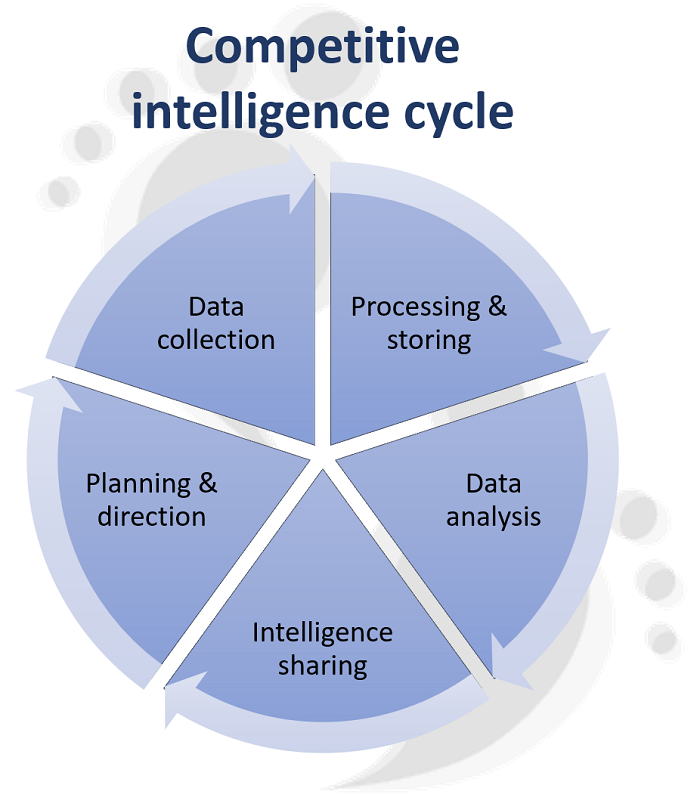
What are the Benefits of Competitive Intelligence?
Well, first and foremost – you can choose a beneficial business strategy – we’ve just mentioned it. But! It’s not all. Though your marketing strategy is crucial, it’s not the only advantage competitive intelligence can give you. CI may come in handy whenever you’d like to:
- explore new markets and launch new products,
- outstand from competitors and win the market with the most attractive prices,
- anticipate your competitors’ moves,
- improve product development and consumer experience,
- boost sales volume,
- become a visible and attractive option for your potential clients.
Competitive Intelligence in Business – examples
You may be wondering right now: “Ok, great, but what does competitive intelligence really do?” Let us share some methods and real-life examples of the competitive intelligence process.
Pricing changes
The competitive business landscape shows itself mostly in rapid price fluctuations. For example, in the e-commerce industry prices can change multiple times a day. And it doesn’t regard Black Friday offers only. As there are numerous promotions and offers online retailers often use price monitoring tools to keep up with all of the changes. They also use Dynamic Pricing features to automate data gathering and implement updates.
Check out the case of one of our clients – Adrenaline.pl, and see what competitive intelligence looks like when talking about price changes and sales growth.
Find out more: How to increase your Google Shopping Campaign by 29% in one month, and outsmart competitors? Adrenaline.pl case.
Positioning changes
When you identify your competitors you also observe and analyze the products they promote. Competitive Intelligence allows you to spot immediately any swifts in your competition’s offers and the messaging they use to communicate their products’ values That – on the other hand – enables you to predict their future strategies and actions.
Such information may be found on websites, marketplaces, Social Media, or in newsletters.
Content updates
Content updates are not only a method to attract new clients and sell more but also a precious source of information. Such updates may indicate changes within your competitors’ marketing strategy, reveal details of their expansion into new markets, or show the readiness to explore new target audiences. Therefore, don’t underestimate the value of content changes.
Customers’ reviews and employees’ opinions
It’s normal that every company tries to show itself in a good light. That’s why you’ll probably find plenty of information about your competitors’ greatest achievements. Yet, what you need to do is to get the full picture. How to do this? Check your competitors’ reviews. By analyzing their customers’ and employees’ views you’ll discover weak points and real advantages of your competition. That – consequently – will help you to determine opportunities for your company.
How to gather Competitive Intelligence?
Due to its complexity gathering, Competitive Intelligence is not as simple as asking Google for help. However, is not that difficult as well when divided into 4 small steps. Let’s take a closer look at them.
- Find your direct competitors.
We emphasized the importance of identifying competitors a couple of times. But there is still one more thing to be clarified. When looking for competition, pay a closer look at your direct competitors. Direct competitors are the retailers and companies who offer the same assortment of goods to the exact target audience. Therefore, though H&M and Prada both belong to the fashion industry, they are not direct competitors, as their business models and pricing strategies are entirely different. - Define your main areas of research.
When it comes to competitive intelligence sky is the limit. It’s an extremely broad subject, so at the end of the day, you may feel a bit lost. To avoid such a situation determine your goals. This will help you to understand what kind of information you need to acquire, and – as a result – how to do this.
Defining your research of interest will also enable you to pick the right competitive intelligence tools.
- Collect external and internal data.
There are various sources of gathering competitive intelligence. Nevertheless, they can be divided into two main subcategories: external and internal.
External data includes information you can find online by poking around your competitors’ social media channels, websites, reviews, and offers.
On the other hand, internal data refers to in-house information, from direct e-mails your competitors send to their clients to office gossip.
None of the two areas above should be neglected. - Create your competitors’ profiles.
Let’s say that you accomplished all of the previous steps. Now, it’s the right time to frame and categorize the data you have. In other words – create profiles of your competition. What is their actual assortment? Which pricing strategies do they use? Which distribution channels do they use? What kind of feedback do they get? What are your competitors’ business prospects? What revenue do they get?
These are just a few questions that may help you build such a profile.
What are the methods of gathering competitive intelligence?
There are two major methods of gathering competitive intelligence: manual and automated. Both have their pros and cons. Also, you can use the two to check all of the mentioned competitive intelligence sources.
As far as manual data acquisition is concerned, at the first glance, the principal advantage is the price. You can simply go to a website and check anything you need. It may also seem quicker, especially when you are interested in one particular company or competitor. However, it’s just a mirage.
Automated data collection on the other hand may seem complex and pricey. Let’s bust some myths though.
Myth: Automated data acquisition is expensive.
Today you’ll find plenty of tools or platforms delivering competitive intelligence solutions for free. What’s more, the huge majority of such providers offer trial or demo versions of their products. That’s why you don’t need to spend a fortune to implement competitive intelligence solutions in your business.
Myth: Automation takes a lot of time.
Many retailers are afraid of automated solutions as they are not sure how to manage difficult configurations and learn how to operate them. It may be partly true, as there are tools that require advanced technical skills. Nevertheless, today you may gain access to numerous user-friendly competitive intelligence applications as well as get the support of their customer service teams.
Once set up, the automated tool allows you to save hundreds of hours in every aspect of your business.
Myth: Automated competitive intelligence is error-prone.
When using automated competitive intelligence solutions you may be concerned about the actual accuracy of collected data. However, there is nothing to worry about. First of all, algorithms can provide you with high-quality information gained from various sources at any given time. It’s incomparably faster than collecting it manually. Moreover, the risk of mistakes is minimized or even excluded. What’s more, there is no hindrance to double-checking the results. Therefore, if you don’t feel comfortable and assured with the given results just verify it yourself!
Also, when using automated features, such as pricing rules in Dynamic Pricing functionality, you can also decide if the rules should be activated automatically or whether some authorization should be required.
Check also: How to learn that you can earn more from a single e-mail message? – Business Process Automation in practice.
What is a competitive intelligence tool?
By competitive intelligence tool, we understand any app, platform, or software that is able to provide you with desirable data and collect it from online & offline sources. As competitive intelligence covers numerous areas, there are no particular specifications such a tool should meet.
Today, you’ll also find paid and free competitive intelligence solutions. To narrow down the list, we’d like to present you with the top 7 competitive intelligence tools that you definitely should check out in the upcoming year.
Top 7 Competitive Intelligence Tools for 2023
Dealavo
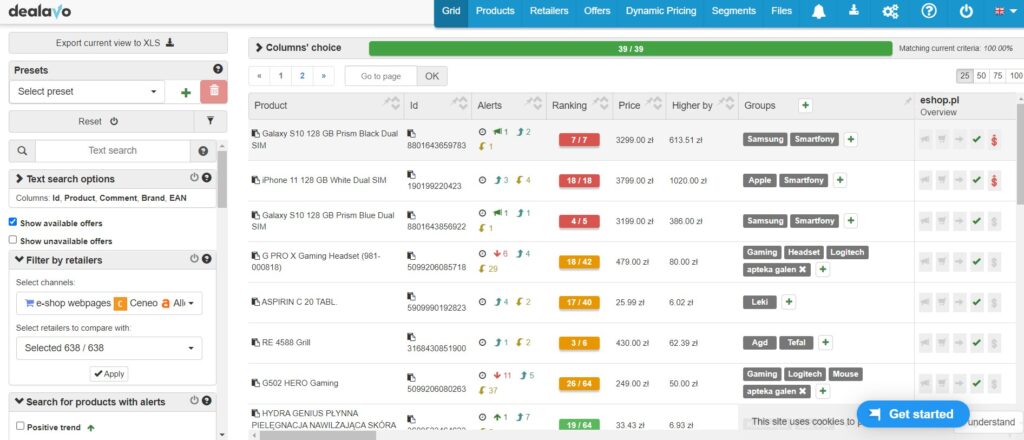
Dealavo is a price monitoring software that is indispensable when it comes to competitive intelligence pricing research. Thanks to the double verification process the app enables providing data of the highest quality: 75% of mappings are done by our state-of-art Machine Learning algorithms, followed by manual verification and completion by the Quality Assurance Team.
With our price monitoring tool you will be able to:
- identify and monitor your biggest competitors, both online & offline,
- use the Dynamic Pricing feature to adjust your price to market conditions according to the rules you set,
- monitor prices and promotions on every website or marketplace worldwide, including Amazon, Google Shopping or Idealo
- and much more.
To find out more, check the video below.
SimilarWeb
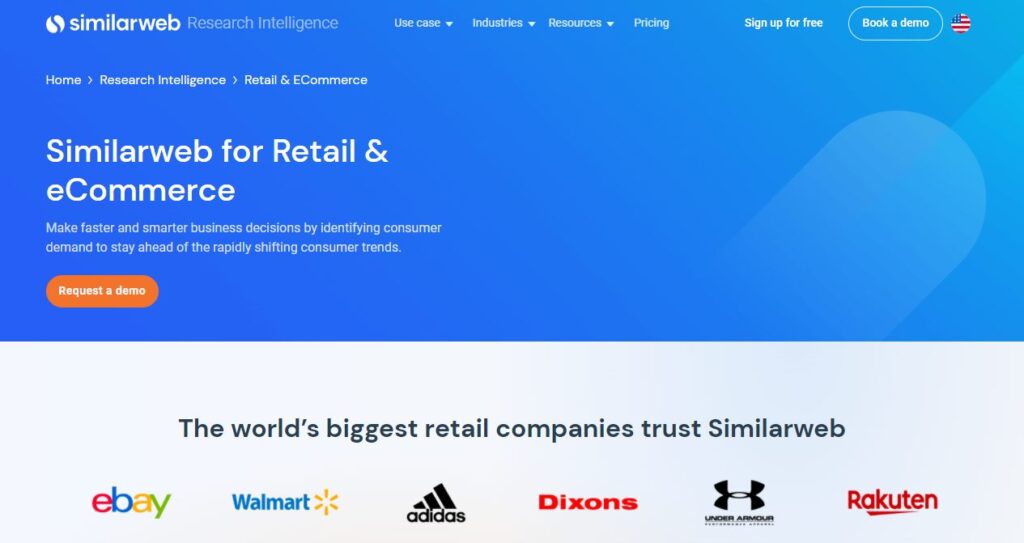
Similarweb is a comprehensive Market Intelligence software providing a broad range of e-commerce services. The tool features cover main Business Intelligence benchmarks such as Research Intelligence, Sales Intelligence, Investor Intelligence, and – last but not least – Shopper Intelligence. All of these functionalities will satisfy even the most demanding retailers. Similarweb leads merchants through key business areas delivering competitor analysis, customer behavior reports, audience analysis, and lead generation.
Due to four different types of data e-commerce business owners may be sure of highly accurate estimations and gives a holistic view of your digital landscape.
Similarweb offers a 7-days free trial.
Talkwalker
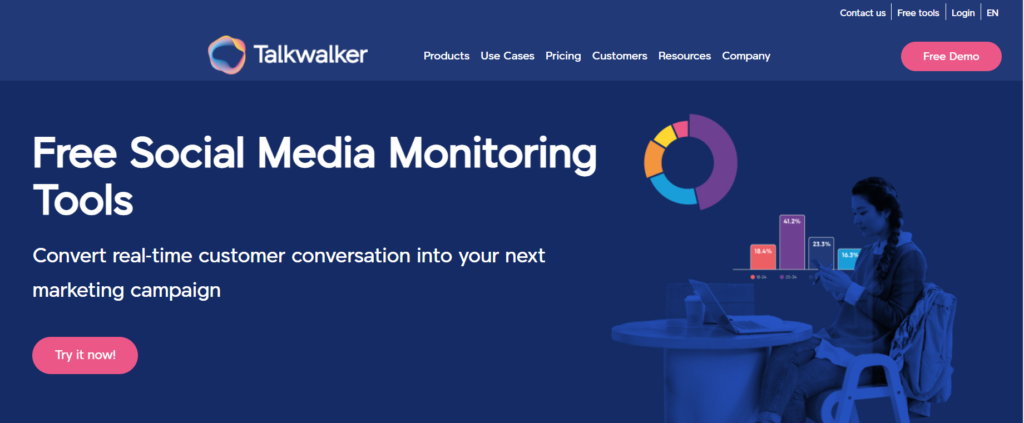
Talkwalker is a customer-oriented competitive intelligence app. It may be also considered an advanced alternative to Google Alerts, as the tool also provides you with notifications every time any news, Tweets, or discussions occur. Nevertheless, the main feature of Talkwalker is to give you feedback on any changes in your customers’ behavior, preferences, or engagement. With this insight from all stages of customer journey, you’ll be able to make business-wise decisions as well as catch emerging chances on the spot.
Talkwalker offers a free demo of its products.
SEMrush
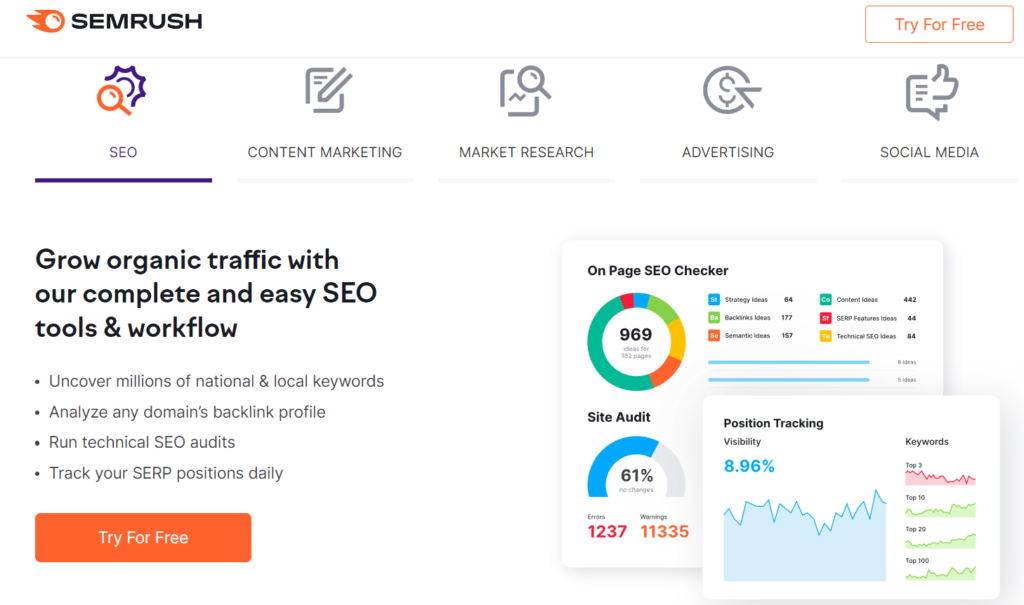
Being one of the most popular e-commerce software, SEMrush probably doesn’t need to be introduced. Whatever you need: SEO, content marketing, competitor research – SEMrush has it all. In total, the software offers more than 55 marketing tools that will help your business grow. The huge advantage of SEMrush is Advertising solutions. In terms of Market Research, users may find 10+ dedicated tools focusing on competitors & market analysis.
The pricing starts from $119/month, so some may consider it a con. However, with such a wide range of products SEMRush is worth considering.
Owletter
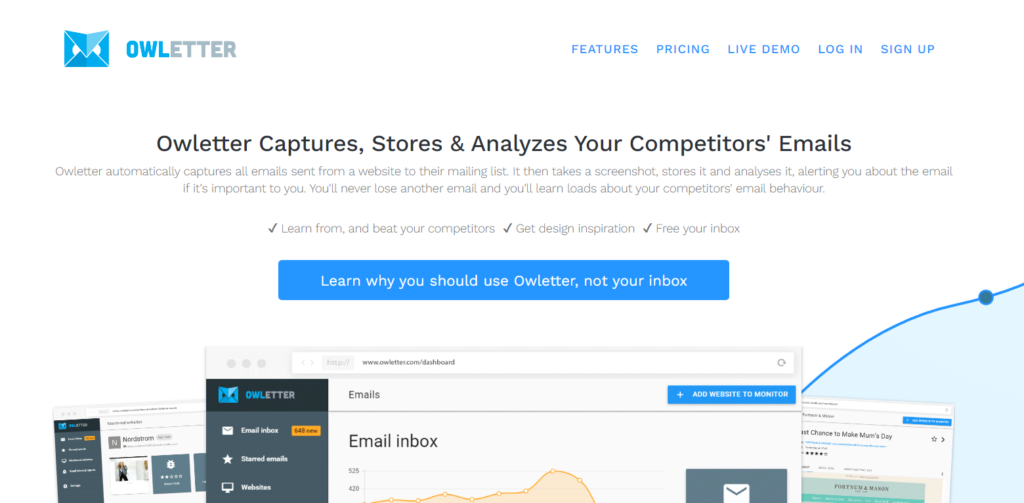
Owletter is a tool designed to track your competitors’ e-mail activities. App’s features allow you to capture e-mails sent from competitors’ websites to their mailing lists, check on their feedback, spam reputation, and e-mail frequency. With Owletter you also don’t need to worry about the server’s capacity – all the e-mails are stored forever on the provider’s side giving you access to the current as well as historical e-mails.
Pricing starts from $19/month, but you can also request a free 14-day trial.
Crayon
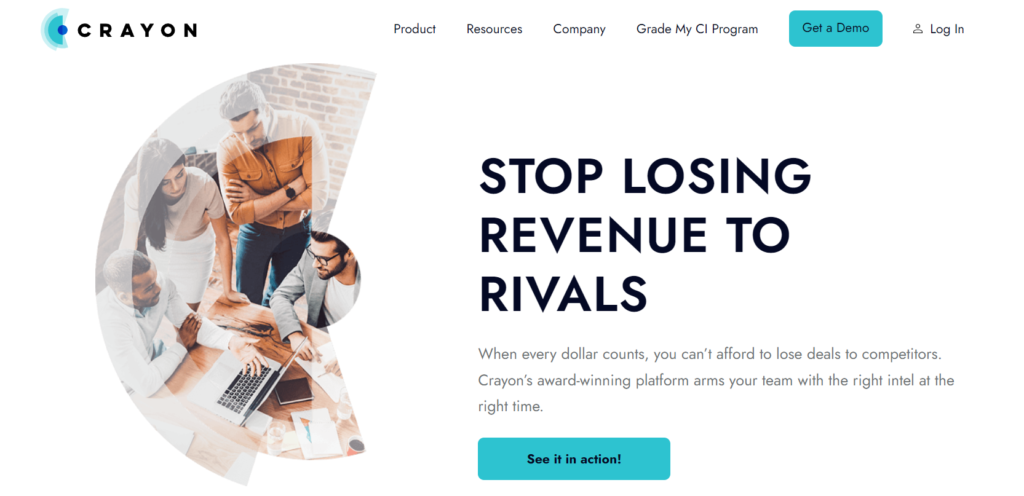
Crayon is a potent CI solution that offers centralized access to information collected from millions of sources. Thanks to real-time and historical analysis you will easily recognize business prospects as well as recognize ongoing trends. The app can be operated on any device at any time.
With Crayon you’ll get deep insight into pricing updates, messaging pivots, team changes, and SEC filings that later you can combine and compare with your own in-house conditions.
Though Crayon doesn’t provide any information about their products’ pricing, a free demo is available.
BuzzSumo
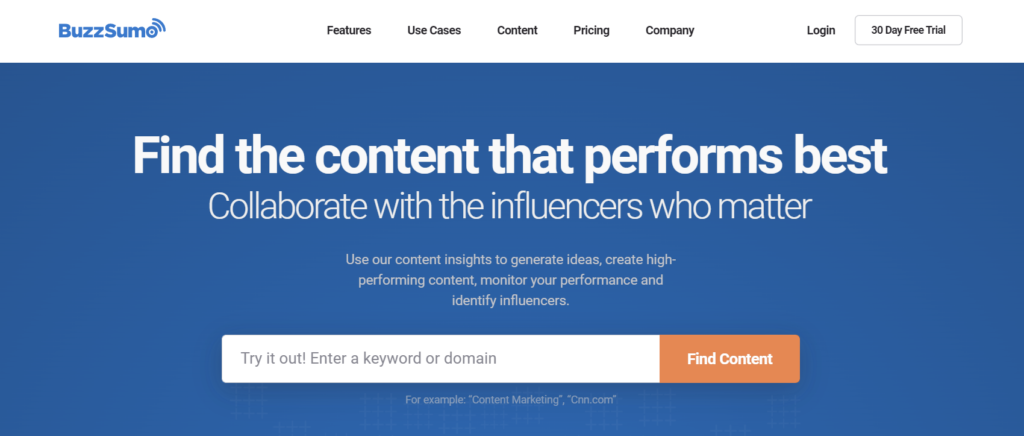
What BuzzSumo does the best is content monitoring. Apart from tracking content trends, you can also find there a powerful content search engine to discover content ideas that will work best for your business. BuzzSumo database counts up to 5 billion articles! That also regards Social Media content.
Moreover, if you are interested in popular and catchy advertising, BuzzSumo helps you to identify the best influencers for your brands.
The tool offers a free version ( up to 10 searches a month) as well as paid ones, preceded by a 30-day free trial.
Conclusion
As you can see, Competitive Intelligence is a broad topic that cannot be easily labeled. There are various types of Competitive Intelligence, so you should precisely define your need first. Nevertheless, Competitive Intelligence is a powerful business support you also should definitely consider implementing, regardless of your company size. Let us briefly sum up the bullet points of this article:
- Define your needs.
- Find your direct competitors.
- Use Competitive Intelligence tools.
- Start from gathering competitors’ assortment and pricing data.
When talking about prices – we highly recommend you to try Dealavo. Contact us to get a free demo, and start implementing Competitive Intelligence solutions in your business!
